There can be your advertisement
300x150
Where to Go on the Weekend: 3 Estates Near Moscow
Abramtsevo, Arkhangelskoye, Muranovo — pearls of architecture and the most beautiful places in nearby Moscow region
Historic estate — a perfect place for leisurely walks through well-maintained alleys and park paths. Our guide with wonderful photos by Natalia Gradusova will appeal to those who enjoy visiting museums and learning about the life of Russian nobility. Let's go!
Abramtsevo Estate
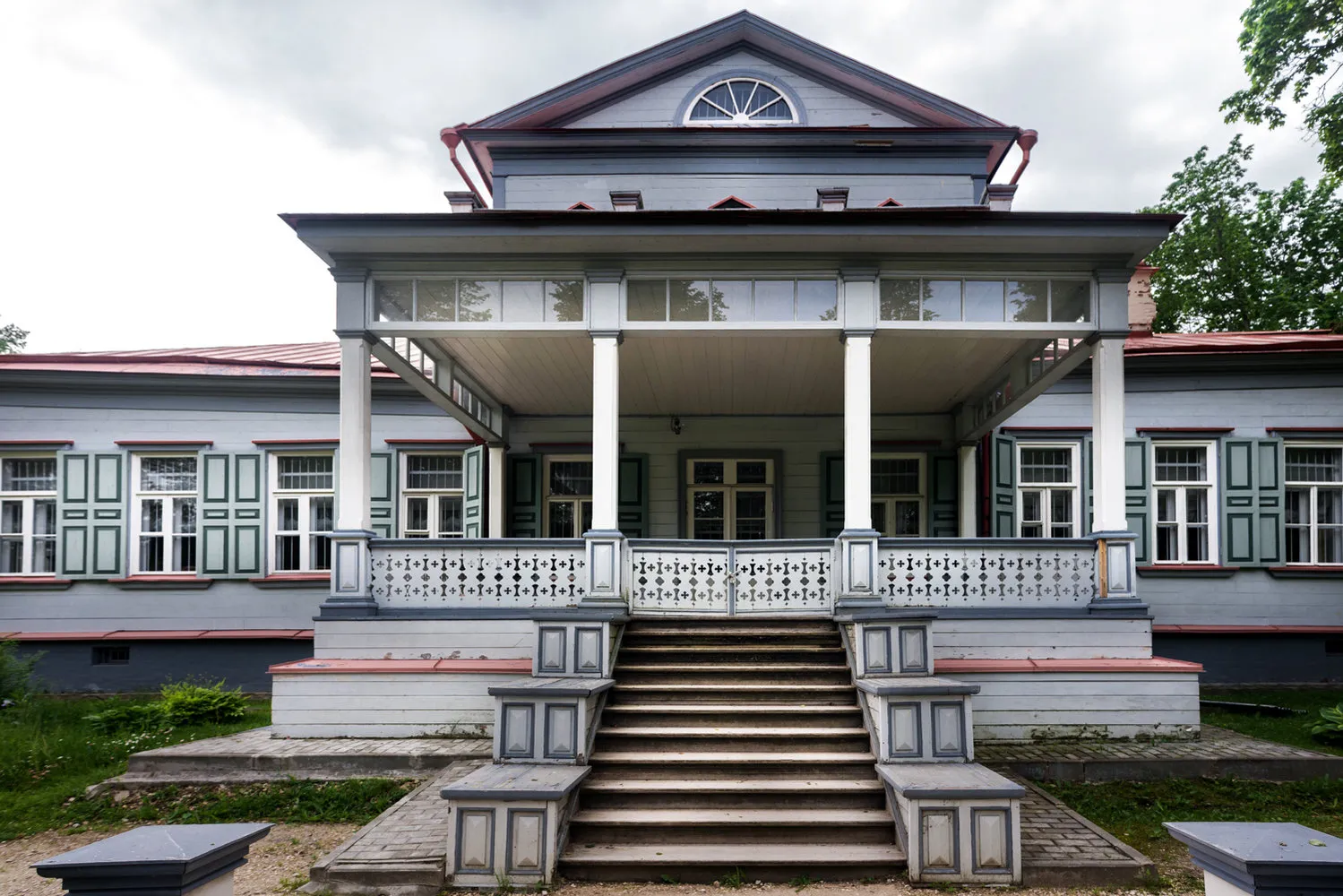 WhereSergiev Posad District of Moscow RegionYear1918StyleClassicism, Russian style
WhereSergiev Posad District of Moscow RegionYear1918StyleClassicism, Russian styleThe Abramtsevo Museum-Reserve is located 60 km from Moscow on the bank of the Vorya River. This place attracts tourists with its picturesque nature and rich history.
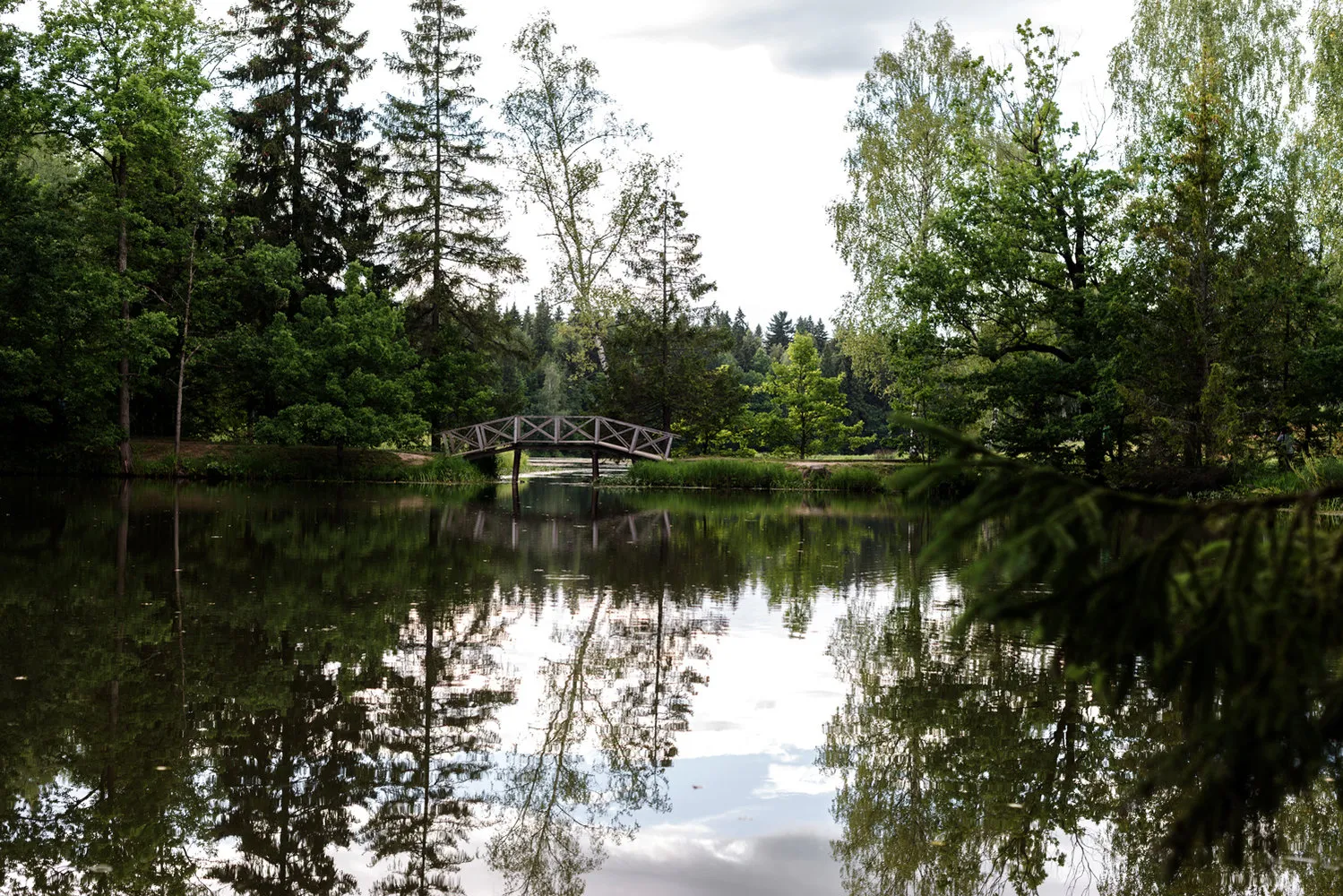
The estate twice became the center of Russian cultural life: first literary, then artistic.
When the estate was purchased by Russian writer Aksakov, famous writers of that time such as Gogol and Turgenev began to gather there. They stayed for long periods and wrote their works under the roof of the main house or sitting by the riverbank, inspired by the beautiful views of the local nature, which Aksakov praised enthusiastically:
The water in the Vorya River is fresh, depth is uniform, bottom — parquet made of fine sand. Evening and mushroom picking — all this at arm’s length, so close to the balcony that one can do everything and talk with children.
After Aksakov’s death, the estate was purchased by Savva Mamontov — a great lover of art and patron. This started the “painting” period in Abramtsevo’s history. Here often came and stayed Repin, Surikov, Levitan, Vrubel, Nesterov. Some famous paintings were created precisely here.
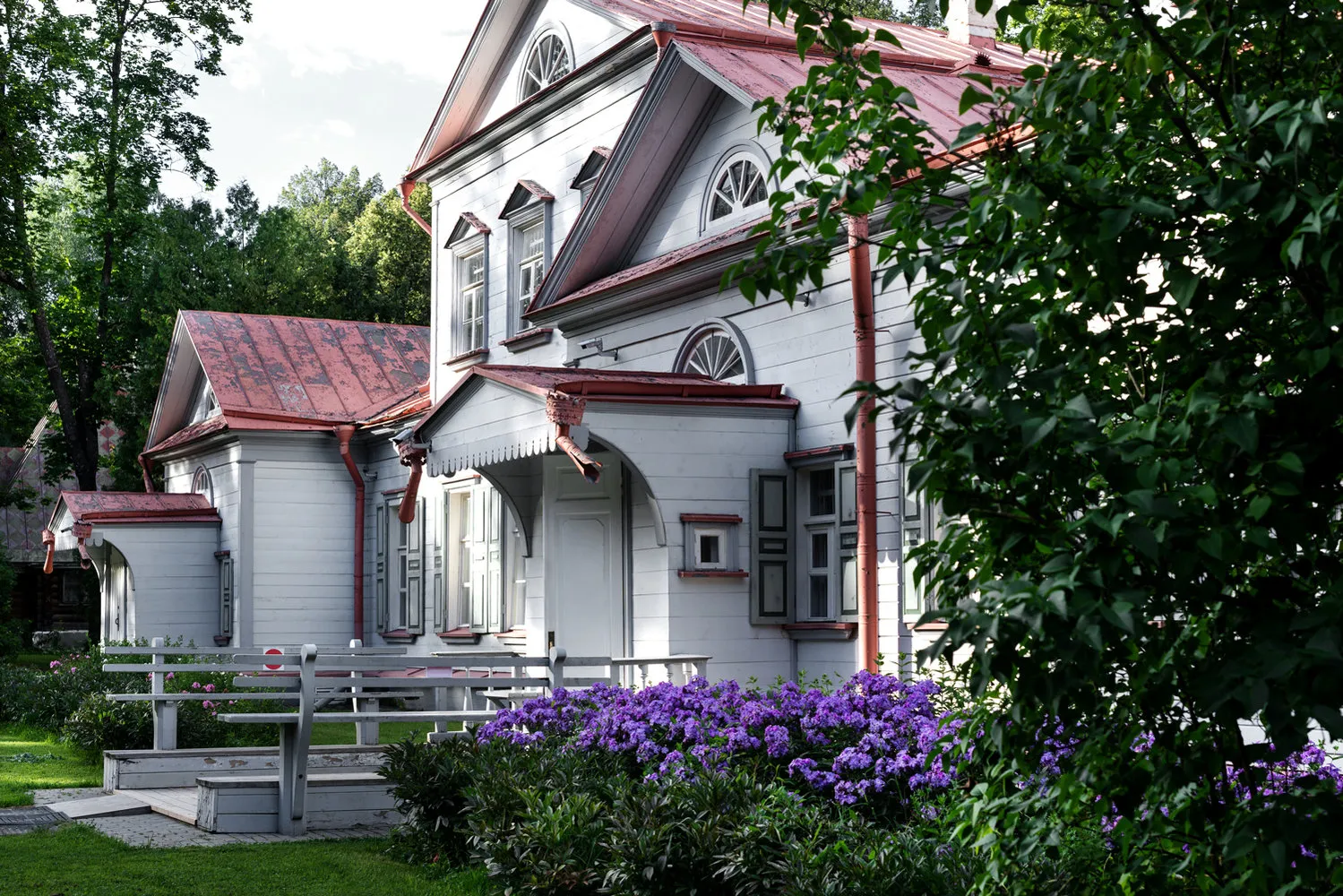
The architecture of the estate is quite modest and represents a typical example of small-scale noble estates of the 19th century. However, the museum exhibitions located in all buildings are very interesting.
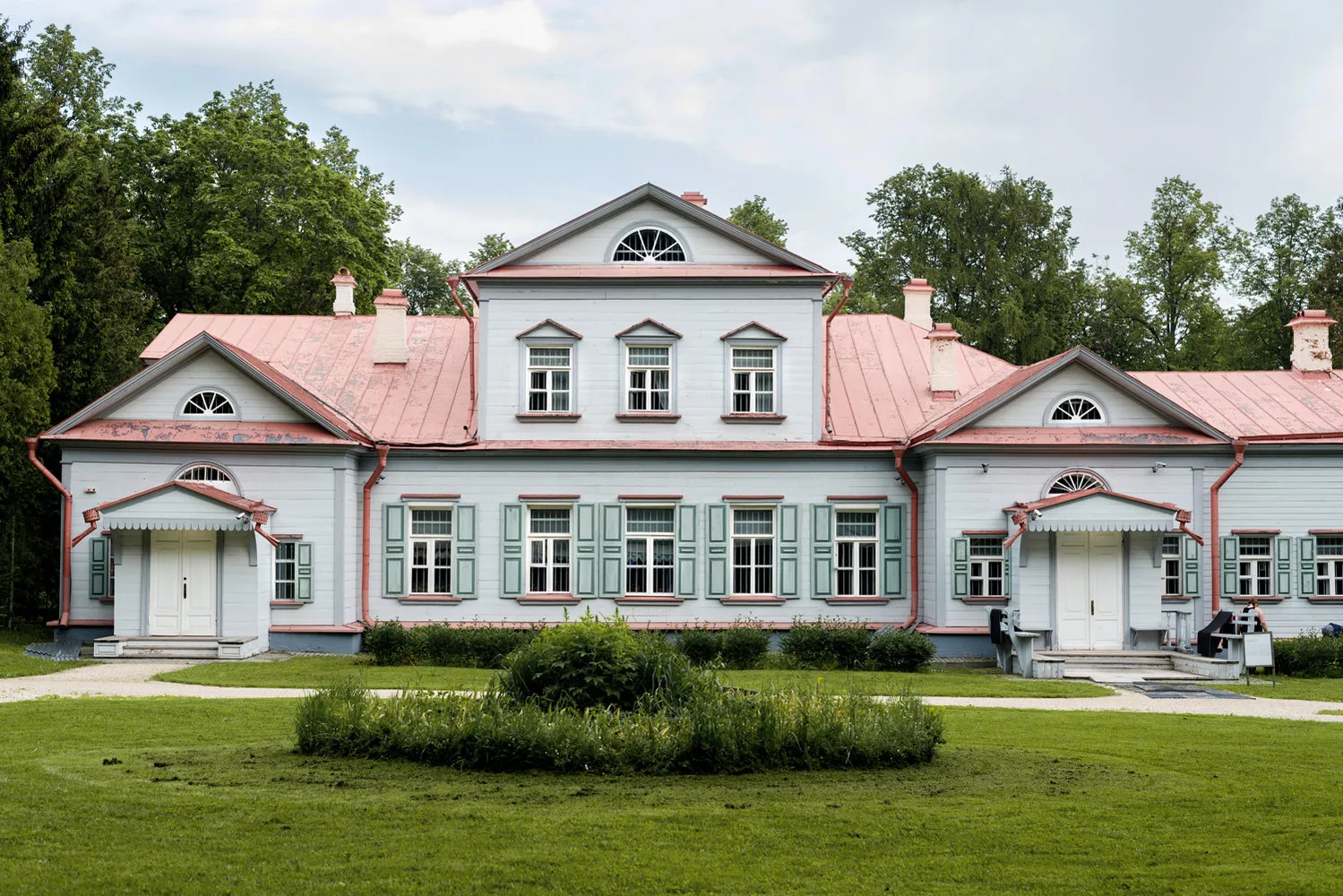
In the main house, efforts were made to preserve the atmosphere of the baronial home: ancient furniture, books, stove with tiles made by Vrubel. Here one can see paintings created by guests of Mamontov — Repin, Serov, Vrubel.
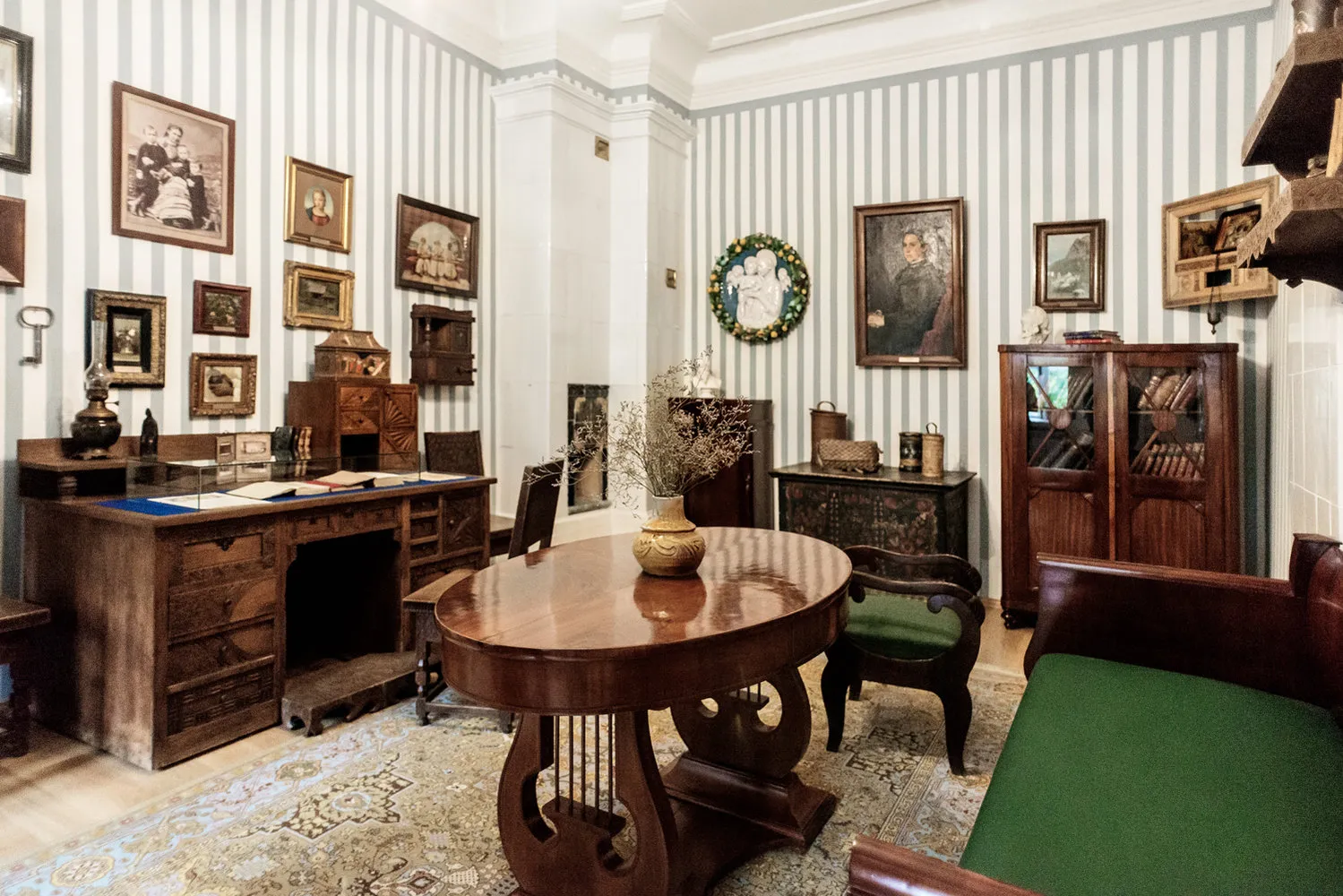

On the estate’s territory, there is an interesting structure — a bathhouse-temple built by architect Ivan Ropet.

Originally intended as a bathhouse, the building turned out to be so beautiful and interesting that it was named the “Temple.” Later, the bathhouse was converted into a guest house — here the artist Serov often stayed.
Another whimsical building is a cottage with intricate carving. This house was where Vasnetsov, Serov, Konchalovsky, and Polevoy lived and created their works for a long time. Today it is a museum, and in the basement there is an active artistic workshop where various masterclasses for tourists are held.

The Church of the Savior Not Made by Hands, located on the estate’s territory, was built by the Mamontovs together with friends: Vasnetsov designed it, Vrubel made the fireplace, the Mamontovs themselves carved the stones, and their wife Elizabeth planned the interior.
The church became the family mausoleum: here are buried Savva Ivanovich and his son Andrei.

Arsenyev Estate
 WhereKrasnogorsk City District of Moscow RegionYearApproximately 1584StyleClassicism
WhereKrasnogorsk City District of Moscow RegionYearApproximately 1584StyleClassicismArsenyev Estate is called the “Moscow Versailles” for its beautiful park and luxurious architecture in the classicism style.
This estate is very ancient: it was known from written sources during Ivan the Terrible’s time. At different periods, it belonged to Boyarin Sheremetev, Prince Odoyevsky, Golitsyn, Yusupov.
Arsenyev is the only palace-park ensemble in Moscow region that preserved all main elements of its design.

The main house of the estate was built according to the project of French architect Gerne over more than forty years.
A large number of windows and glazed doors indicate that the palace was planned as a summer residence. Numerous columns located on all facades give the building lightness despite its monumental scale.
Another feature of the palace is the varying heights of floors. The first floor is higher, where the parade halls were located, and the second floor had living rooms and a library.

The halls of the Main House were restored, and now a museum is open there. During restoration, elements of decoration and the color palette of the interior were restored, as well as the textile furnishings of the palace.
The museum exhibition was created based on historical descriptions from the period of the estate’s peak: artistic compositions are arranged according to the vision of Prince Yusupov.


In the eastern part of the estate, there is a magnificent structure — a church-mausoleum dedicated to Nicholas the Wonderworker, built by the Yusupovs in memory of their son’s tragic death in a duel. This structure received the name “Colonnade.”
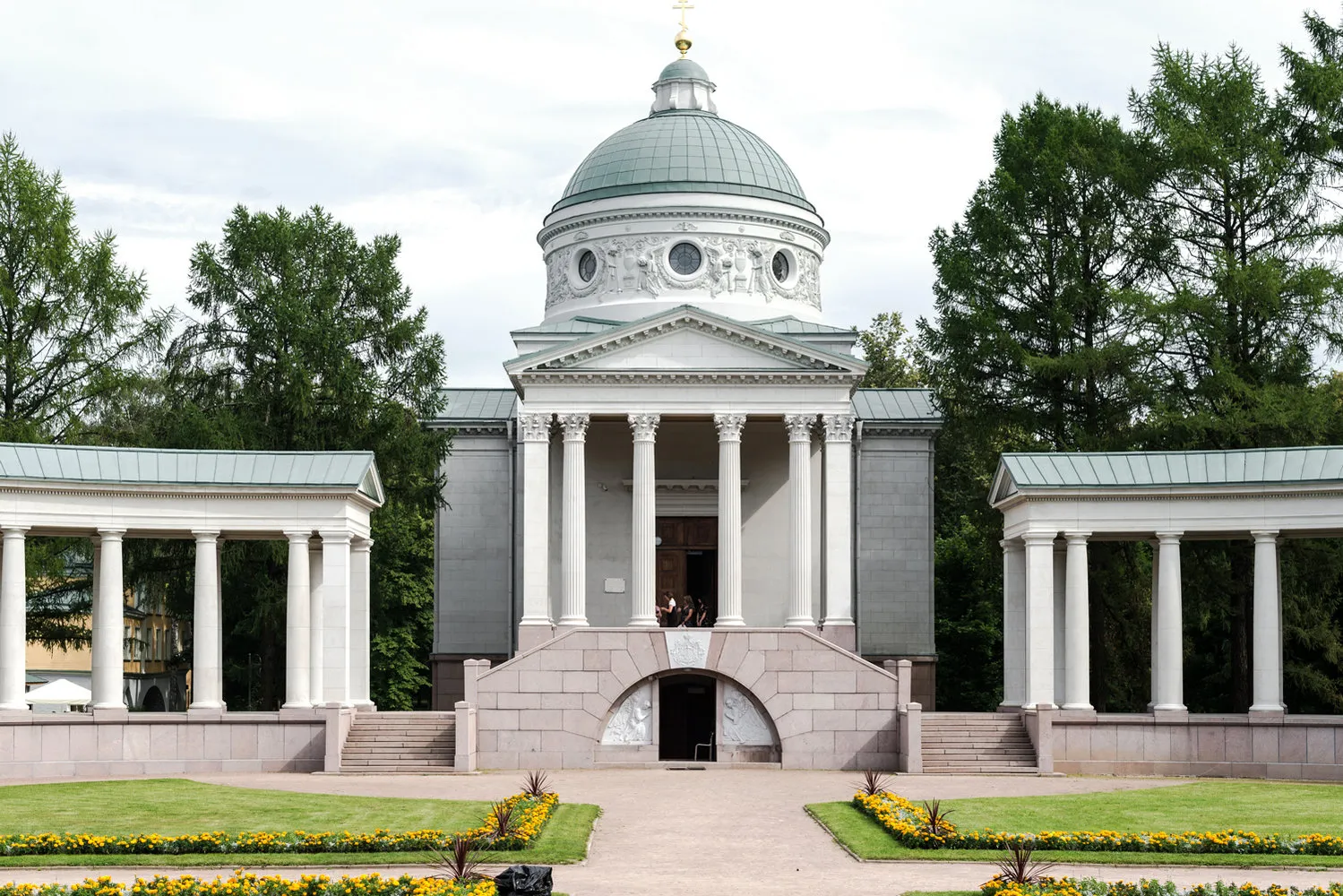
The mausoleum was not used for its intended purpose but contributes significantly to the palace ensemble and completes the architectural concept of the estate. Today, musical concerts and festivals are held there — the “Colonnade” has excellent acoustics and luxurious interior.
Many famous people visited the Arsenyev estate over time: Karamzin, Pushkin and Vyazemsky, Herzen and Ogarov, Serov, Korovin, Stravinsky.
Pushkin was enchanted by this place and dedicated lines to it:
…Stepping through your threshold, I suddenly transport myself to the days of Catherine, A library, idols and paintings, And the orderly gardens testify to me That you are kind to the Muses in silence…
Members of the Russian imperial family also visited the estate: Alexander I, Nicholas I, Alexander II, Alexander III, Nicholas II.
Today, lectures and tours are conducted for visitors in Arsenev, creative performances and musical festivals are held, cafes and restaurants operate there. Come — everything is here for active and enjoyable weekend leisure.
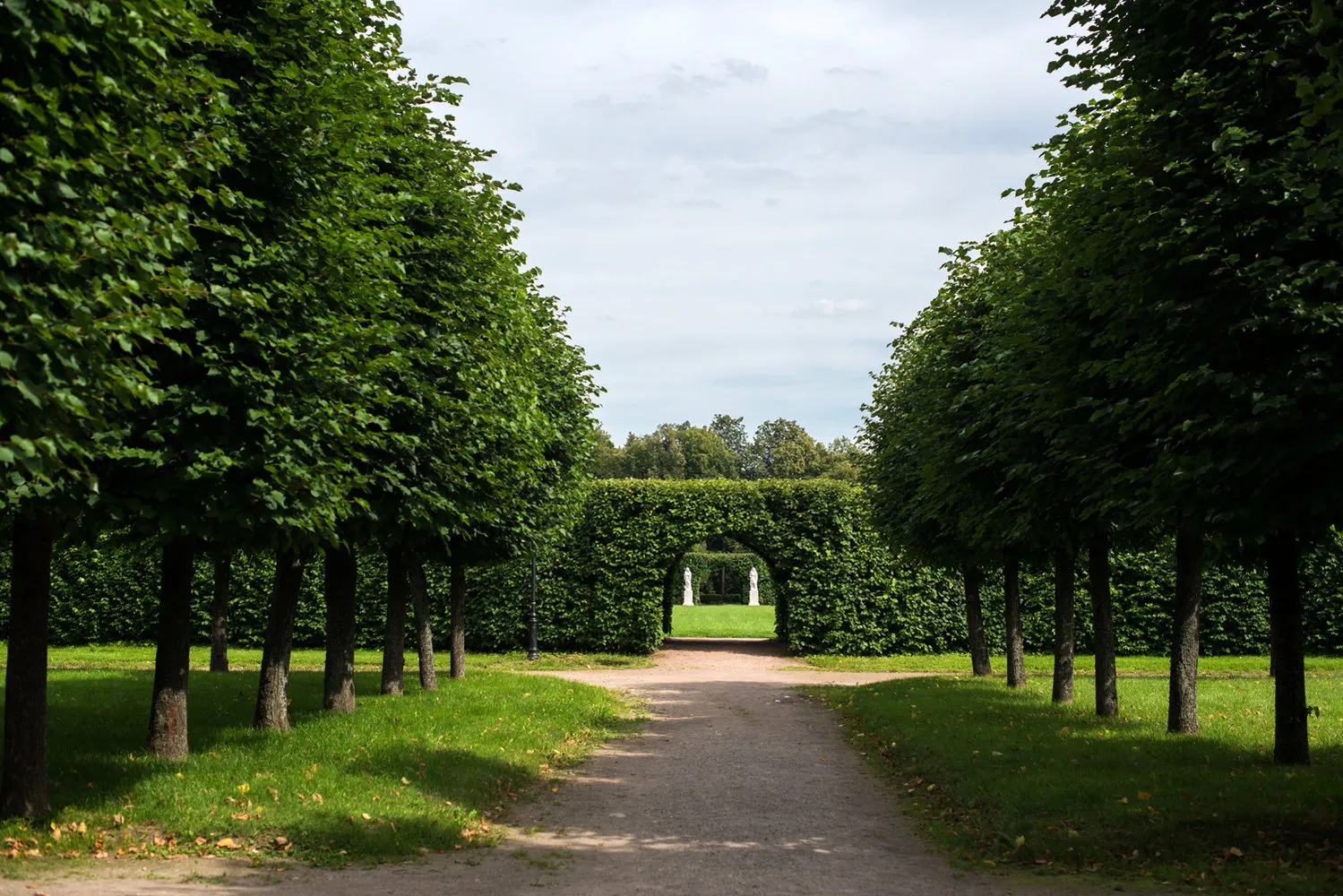
Muranovo Estate
 WherePushkinsky District of Moscow RegionYear1842StyleEclecticism
WherePushkinsky District of Moscow RegionYear1842StyleEclecticismMuranovo Estate is an attractive place. Beautiful Russian landscapes, as if from Levitan's paintings, invite for peaceful walks and quiet conversations in nature.

In its current form, the estate was built by poet Baratynsky in 1842. Before that, it was just a village. The peak of the estate came in the 1870s. A magnificent park was laid out on the Muranovo territory, a linden alley was planted, and peach and flower greenhouses were built.
When the estate passed into the ownership of the Tютчевs, the poet’s son built a wing for his mother in the northeast corner of the estate. Here, Ernestina Fedorovna worked on compiling the legacy of Fedor Ivanovich.
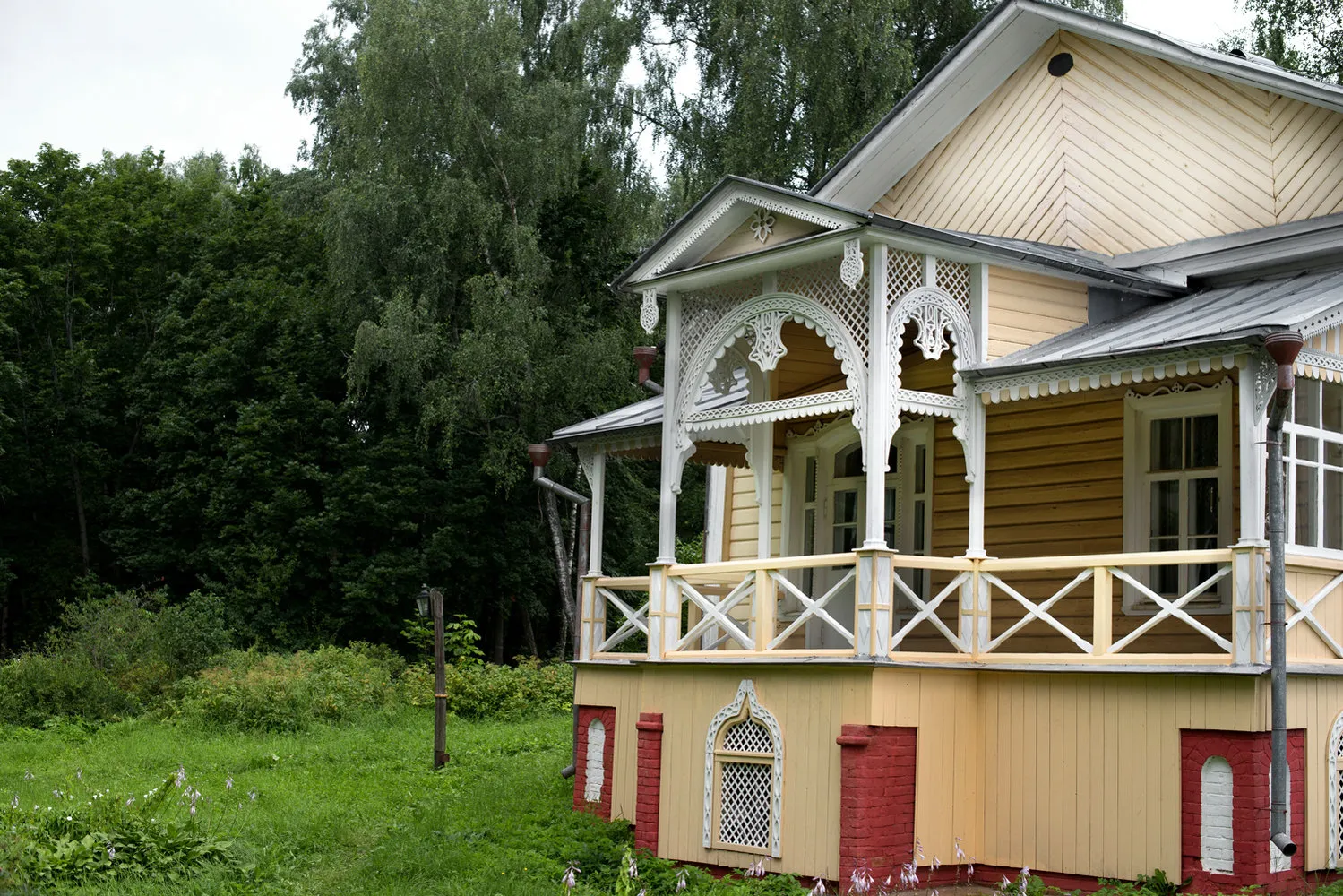
Tютчев wrote about it:
This is a charming wooden house on a brick foundation, equipped with excellent stoves, decorated with balconies and indeed very comfortable.
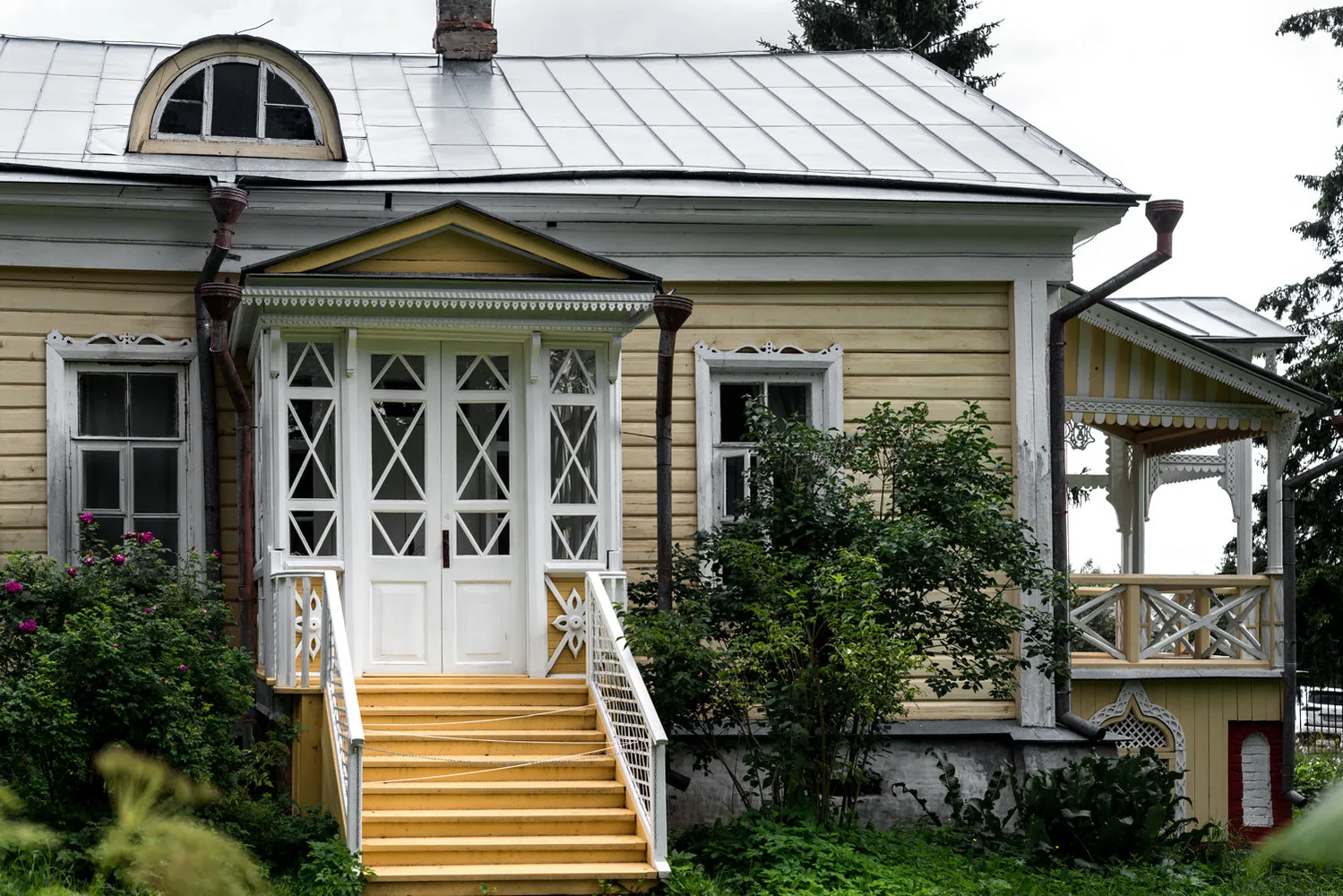
Under the initiative of the poet’s grandson, a state museum named after Fedor Tютчев was opened in the estate in 1920. Thus, Muranovo became one of the first literary and memorial sites.

In July 2006, a fire occurred in the estate due to a lightning strike, but thanks to the prompt actions of museum staff, almost all exhibits survived. Five years ago, the entire exhibition was fully restored.

Photo: Natalia Gradusova
More articles:
 IKEA Summer Sale: What to Buy in July?
IKEA Summer Sale: What to Buy in July? How to Improve Kitchen Storage: 8 Ideas, 10 Useful Options
How to Improve Kitchen Storage: 8 Ideas, 10 Useful Options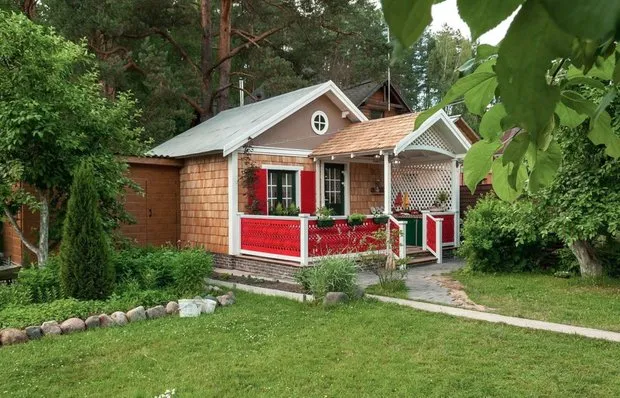 How to Convert a Garden House into a Residential One and Is It Necessary to Approve the Bathhouse?
How to Convert a Garden House into a Residential One and Is It Necessary to Approve the Bathhouse?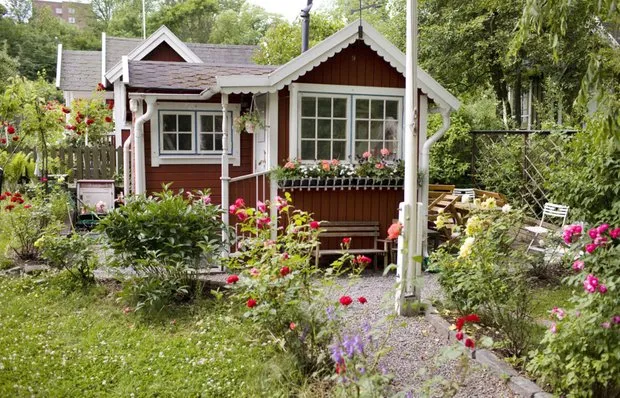 How to Transform a Dacha Plot Cheaply: 7 Ideas
How to Transform a Dacha Plot Cheaply: 7 Ideas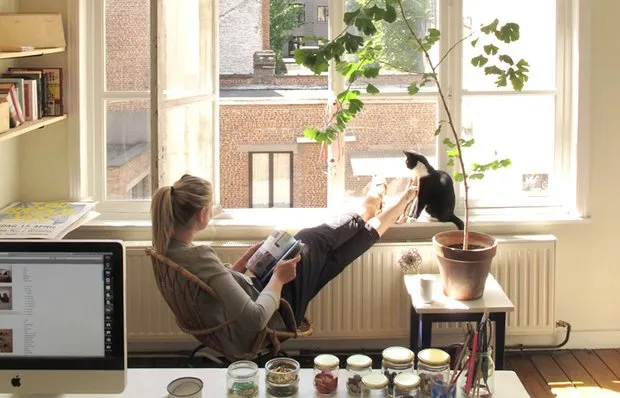 How to Survive Hot Water Shutdown: 7 Reliable Ways
How to Survive Hot Water Shutdown: 7 Reliable Ways How to Declutter Your Wardrobe in One Day
How to Declutter Your Wardrobe in One Day How to Create a Full-Featured Bathhouse in a Small Garden House
How to Create a Full-Featured Bathhouse in a Small Garden House Before and After: How We Transformed "Killed" Bathrooms
Before and After: How We Transformed "Killed" Bathrooms